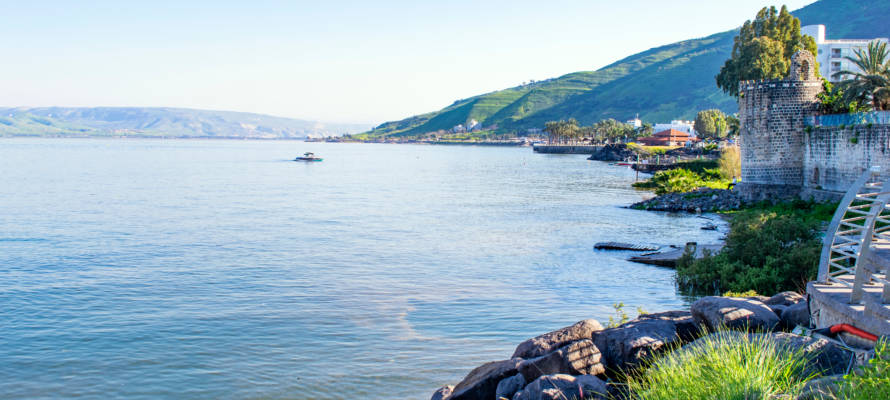Climate change and unsustainable water management are leaving lakes dried up all over the Middle East and beyond, but the Israeli government is hopeful it has a solution, CNN reports.
By Beth Stern
Israel is expecting to complete the construction of a 31-kilometer long pipeline by the end of the year that will provide the Sea of Galilee with desalinated water from the Mediterranean, keeping it healthily full on a constant basis.
Despite its name, the Sea of Galilee, aka Lake Kinneret, is in fact Israel’s largest freshwater lake. This will be the world’s first attempt to refill a freshwater lake with treated sea water, and no doubt global water experts will be keeping a close eye on the project to see if they can do the same in their own countries.
The underground pipeline will run to the Kinneret from the country’s main water filtration facility near Haifa. First, tests will be run to see if any unexpected problems ensue from the introduction of the desalinated water into the fresh water. If all goes according to plan, this $264 million project will get the green light to start filling the Kinneret by early-to-mid 2023.
It will carry 120 million cubic meters of water annually but will replenish only what is necessary, depending on what Mother Nature decides to bestow during the winter.
“The uniqueness of this project is that it gives us almost infinite flexibility,” Noam Shoa, an engineering design manager for Israel’s Mekorot water company, said in a CNN report Friday. Mekorot is in charge of the project.
In five desalination plants along the coast, water from the Mediterranean is made sweet in a process called reverse osmosis. Sea water, which contains up to 40 grams of salt per liter, is squeezed through membranes that permit the passage of the water while leaving the salt behind.
By now, over 75% of the country’s drinking water originates in the Kinneret on its western border. A sixth plant is scheduled to open next year in the central Sorek area, and a seventh is being developed in the Western Galilee region. The government expects that by 2030, up to 90% of the country’s annual municipal and industrial water consumption will be covered by the almost inexhaustible supply on its coast.
The desalinated water headed for the Kinneret will be piped from Ashdod, the second-largest plant, which collects the water that was treated in all the facilities.
Ensuring Kinneret’s Stability
Going “up north” in the summer in Israel has always been one of the most common vacation ideas for citizens and tourists alike, especially during the dog days of August, when almost no childcare facilities are open. The Kinneret is an especially favored destination, with its crowded beaches and long lines for all sorts of water activities attesting to its popularity.
The famed Sea of Galilee, however, has shrunk since the early days of the state, due to inconsistent rainfall, and another ubiquitous sign of summer is the daily report on the level of the water. During periods of drought, when it reached the “red line” of -213 meters (-699 feet) below sea level, pumping was supposed to be halted so as not to damage the ecosystem.
During very bad years, such as toward the end of a five-year drought that ended in 2018, a “black line” that was two meters lower was instituted because the need for fresh water was so great that the authorities felt pumping could not stop, despite the risk that salt water could rush in from underneath and permanently spoil the fresh water.
The current level of the lake is adequate, due to plentiful snow and rain in the past two winters. But the government is focused on ensuring the Kinneret’s stability, keeping in mind the bad years and the threat that they could return due to climate change as well as Israel’s steady population growth and ever-increasing need for water.
Also taken into consideration are Israel’s formal agreements with neighboring Jordan, which is the second-most water scarce country in the world, according to the UN. Last October, the Jewish state agreed to double its supply to the kingdom to a total of 50 million cu.m. of water per year.
